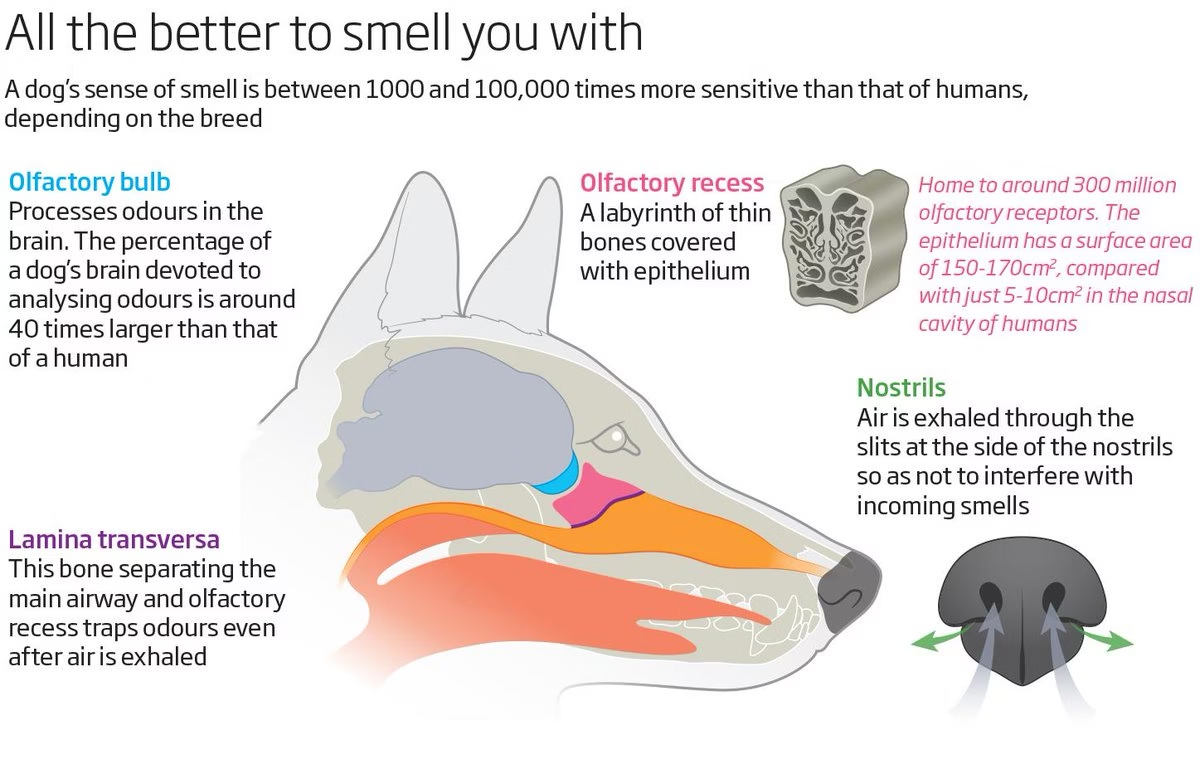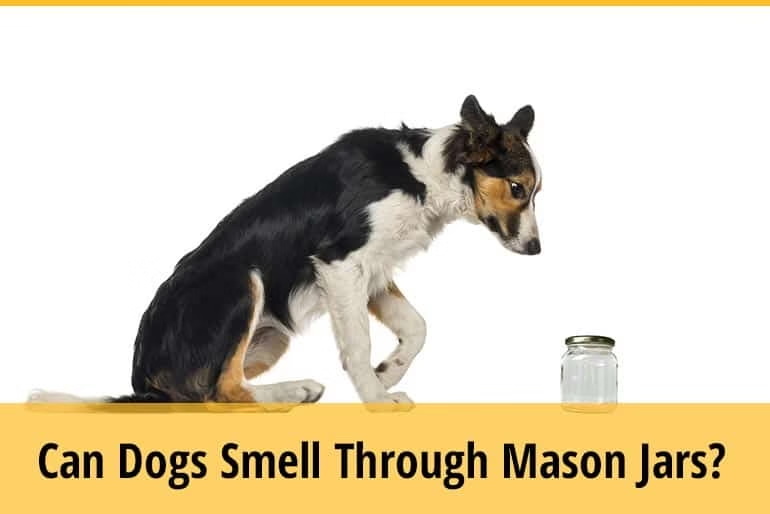Can Dogs Smell Through Mason Jars? You Might Be Surprised
Introduction
Dogs are renowned for their extraordinary sense of smell—far superior to that of humans. With up to 300 million olfactory receptors in their noses (compared to about 5 million in humans), dogs smell can detect even the faintest of scents. This powerful ability has made them invaluable in fields like search and rescue, law enforcement, and medical detection. But what about everyday situations, like storing food or treats in airtight containers? A common question that arises is: Can dogs smell through mason jars?
These jars are designed to be airtight and odor-proof, commonly used to preserve food and keep smells in. But are they truly scent-proof when it comes to a dog’s incredible nose? In this article, we’ll explore the science behind a dog’s sense of smell, how mason jars are constructed, and whether man’s best friend can sniff out what’s hidden inside one. The answer might just surprise you.
How a Dog’s Sense of Smell Works

dogs smell experience the world primarily through their noses. Their sense of smell is estimated to be tens of thousands of times more sensitive than that of humans. This is due to their large number of olfactory receptors and the part of their brain dedicated to analyzing scents, which is about 40 times larger than ours proportionally. dogs smell can distinguish individual scent components in complex mixtures, meaning they can detect a single scent even when it’s masked by others. This remarkable ability raises questions about just how much they can truly smell through barriers.
What Are Mason Jars Made Of?
Mason jars are typically made from thick glass with a metal lid and a rubber or silicone sealing ring. This design is intended to create an airtight seal when closed properly. The materials are non-porous and don’t easily absorb or release odors, making them a popular choice for preserving food. However, the effectiveness of the seal can vary depending on the condition of the jar, the tightness of the lid, and whether the jar has been opened before.
Do Mason Jars Really Seal Airtight?
While mason jars are widely considered airtight, their effectiveness can depend on several factors. A properly sealed mason jar prevents air exchange, which should also prevent odors from escaping. However, over time, microscopic imperfections in the seal or wear on the rubber ring can allow tiny amounts of air—and scent molecules—to leak out. The “airtight” claim is generally true for food preservation, but dogs smell noses are so sensitive that even the smallest leakage could be enough for them to detect what’s inside the jar.
Can Scents Escape a Mason Jar?
In theory, a well-sealed mason jar should trap all scent molecules inside. However, in practice, no container is absolutely perfect. Over time, minute amounts of odor molecules may diffuse through the rubber seal or tiny imperfections in the lid. These molecules are often undetectable to humans but may be picked up by a dog’s highly sensitive nose. If the jar has been opened previously or was not sealed tightly, the chances of scent leakage increase. So, while mason jars do a good job, they may not be 100% scent-proof to dogs smell.
Real-World Experiments and Anecdotes
Many pet owners and dog trainers have put this question to the test—often with surprising results. Some report that their dogs smell showed great interest in sealed mason jars containing treats or food, while others saw no reaction at all. These differences could be due to the type of food, the dog’s scent training, or how well the jar was sealed. Though anecdotal, these real-world observations suggest that dogs can sometimes detect what’s inside, especially if the scent is strong or the seal is compromised.
Factors That Influence a Dog’s Detection Ability
Not all dogs smell have the same scenting capabilities. Breed, age, training, and individual sensitivity all play important roles. For example, breeds like Bloodhounds and German Shepherds are known for their exceptional olfactory abilities, while others may not be as strong. The strength of the scent inside the jar, how long it’s been sealed, and even the environment around the jar can influence whether a dog can detect what’s inside. Understanding these variables helps explain why some dogs smell react to sealed jars while others do not.
Comparing Mason Jars to Other Containers
When it comes to odor containment, mason jars generally outperform common alternatives like plastic bags, Tupperware, or foil wraps. Plastic containers, in particular, can be slightly porous or have loose-fitting lids, allowing odors to escape more easily. Vacuum-sealed bags may offer better protection, but even they can sometimes leak over time. Mason jars, with their thick glass and tight metal lids, offer one of the most reliable ways to block scent—at least to the human nose. However, for a dog, even a minor flaw in any container could be enough to detect what’s inside.
Why It Matters: Practical Implications for Dog Owners
Understanding whether dogs smell can smell through mason jars has practical uses for pet owners. If you’re storing treats, human food, or even medications in mason jars, it’s helpful to know whether your dog can still sniff them out. Some dogs may become fixated on the jar, trying to access its contents, especially if the seal is imperfect. For households with curious or mischievous dogs, this insight can guide better storage practices to prevent accidental ingestion or unwanted behavior.
The Role of Detection Dogs and Scent Training
dogs smell trained for detection work—such as those used in narcotics, explosives, or search-and-rescue missions—operate at an even more refined level of scent detection. Trainers often use a variety of containers, including mason jars, to test and improve these dogs smell scent recognition. Studies and training exercises have shown that, in many cases, detection dogs can alert to substances even when they’re sealed inside airtight jars. This highlights the astonishing precision of a trained nose and suggests that, under certain conditions, even well-sealed mason jars may not be foolproof barriers.
Tips to Keep Odors Away From Dogs
If you’re trying to keep scents hidden from your dog—whether it’s food, treats, or sensitive items—there are a few strategies that can help. First, always ensure mason jars are sealed tightly with undamaged lids and intact rubber seals. Store jars in cool, dry places to prevent seal degradation over time. For extra security, consider double containment—placing sealed jars inside airtight plastic bins or metal containers. Avoid handling the outside of the jar with food-scented hands, as residual odors can remain. These simple precautions can reduce the chances of your dog detecting what’s inside.

Conclusion
While mason jars are excellent at containing scents for most practical purposes, they may not be entirely foolproof against a dog’s powerful nose. Factors like seal integrity, scent strength, and the dog’s individual olfactory sensitivity all play a role in whether a smell escapes the jar and reaches your dog. For most pet owners, a well-sealed mason jar will do the job, but detection dogs smell or particularly scent-driven breeds might still notice what’s inside. Understanding these limits helps you make better choices in storage and canine behavior management.
You Can Also Read: Top 10 Most Dangerous Dogs
FAQS
Can dogs smell through a mason jar?
Generally yes K9s have the ability to smell through glass, the only exception would be if a vacuum seal was formed with the mason jar and zero odor signatures were present prior to the airtight seal being made.
What material can dogs not smell through?
This means that odors will eventually seep through the material through tiny microscopic holes, allowing your pooch to catch a scent. But containers made from metal or glass are non-porous and will keep all odors inside when vacuum sealed.
Are Mason jars scent proof?
Admittedly, Mason jars are not 100% smell-proof, no cannabis container is. Still, they are an effective option. The reason is Mason jars are airtight and help prevent smell from escaping.
Is there a container that dogs can’t smell through?
They can even pick out a single smell hidden among thousands of others. But airtight containers such as glass jars create a vacuum when sealed. If no air can escape then nor can any odour. And there is nothing for the dog to detect.
What makes a jar smell proof?
The airtight seal of a Mason jar is designed to keep air—and smell—locked inside. Compare that to plastic bags or random kitchen containers, which tend to leak scent like they’re in on some joke you’re not.
